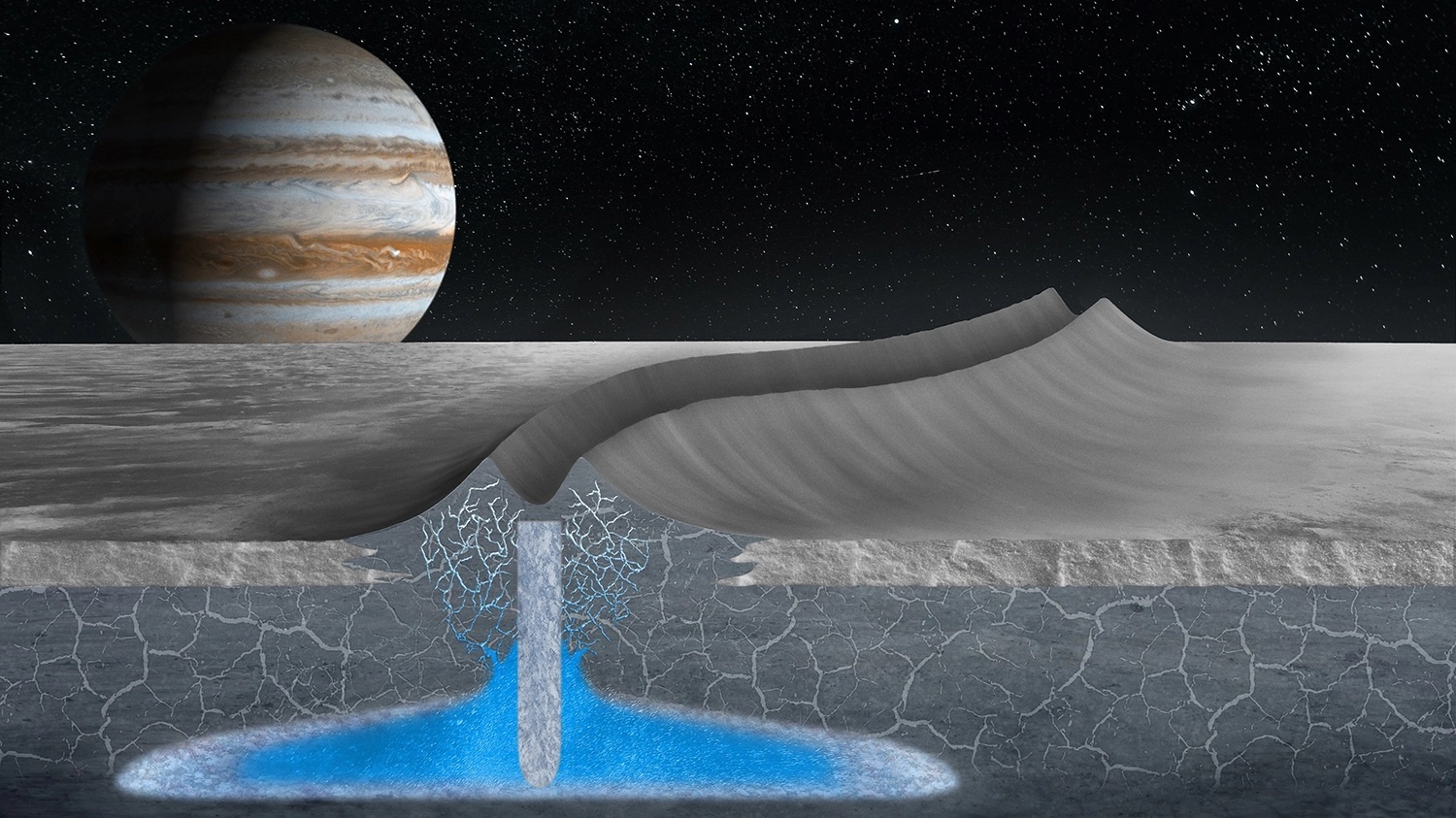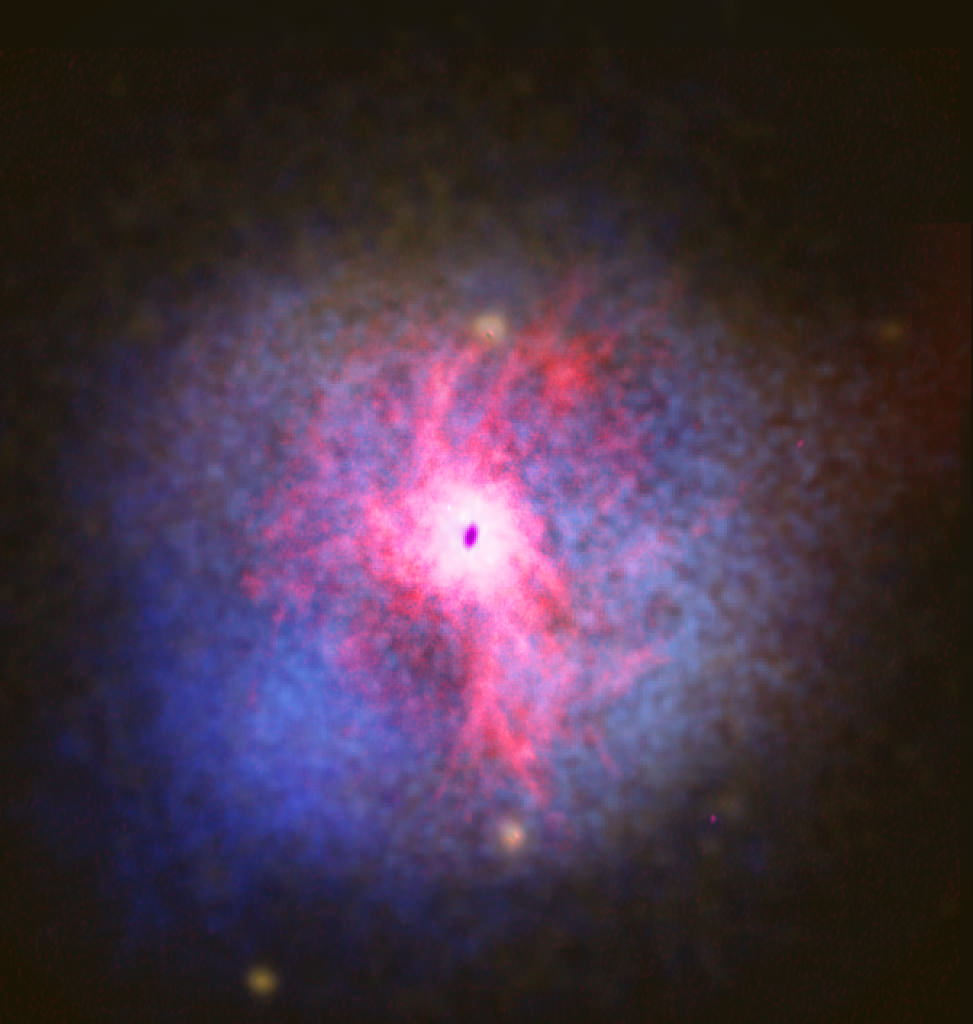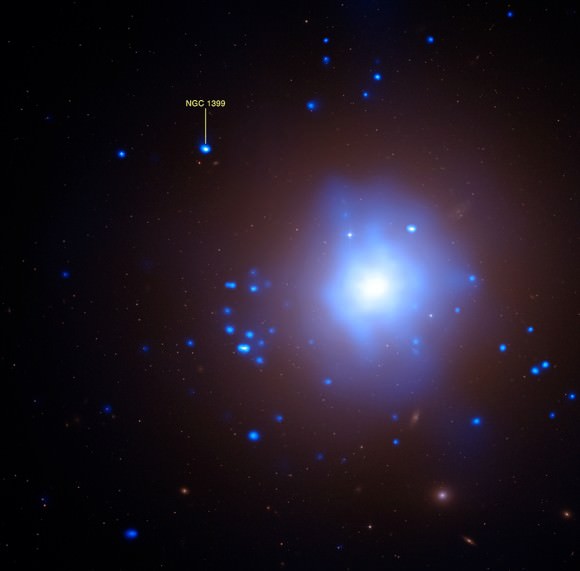Saturn’s largest moon, Titan, is a fascinating and mysterious world, a world literally shrouded in mystery due to thick clouds that cameras imaging in the visible spectrum cannot penetrate. This was made apparent when NASA’s Pioneer 11 became the first spacecraft to fly past Titan in 1979, and then NASA’s Voyager 1 and 2 in 1980 and 1981, respectively. All three spacecraft were equipped with cameras that were unable to penetrate Titan’s atmosphere of thick clouds, although atmospheric data from Voyager 1 suggested Titan might be the first body, aside from Earth, where liquid might exist on its surface.
Continue reading “Titan is an Alien World, but Surprisingly Familiar”Shallow Pockets of Water Under the ice on Europa Could Bring Life Close to its Surface

Beneath the surface of Jupiter’s icy moon Europa, there’s an ocean up to 100 km (62 mi) deep that has two to three times the volume of every ocean on Earth combined. Even more exciting is how this ocean is subject to hydrothermal activity, which means it may have all the necessary ingredients for life. Because of this, Europa is considered one of the most likely places for extraterrestrial life (beyond Mars). Hence, mission planners and astrobiologists are eager to send a mission there to study it closer.
Unfortunately, Europa’s icy surface makes the possibility of sampling this ocean rather difficult. According to the two predominant models for Europa’s structure, the ice sheet could be a few hundred meters to several dozen kilometers thick. Luckily, new research by a team from Stanford University has shown that Europa’s icy shell may have an abundance of water pockets inside, as indicated by features on the surface that look remarkably like icy ridges here on Earth.
Continue reading “Shallow Pockets of Water Under the ice on Europa Could Bring Life Close to its Surface”Pushy Black Holes Stop Elliptical Galaxies From Forming Stars

Contradicting past theories, cold gas has been found in abundance in some elliptical galaxies — showing that there must be some other explanation why these types of galaxies don’t form new stars. Astronomers believe that the jets from supermassive black holes in these galaxies’ center must push around the gas and prevent stars from forming.
Researchers spotted the gas for the first time using old data from the recently retired Herschel space observatory, which was able to peer well into the infrared — where it spotted carbon ions and oxygen atoms. This find stands against the previous belief that these galaxies were “red and dead”, referring to their physical appearance and the fact that they form no new stars.
“We looked at eight giant elliptical galaxies that nobody had looked at with Herschel before and we were delighted to find that, contrary to previous belief, six out of eight abound with cold gas”, stated Norbert Werner, a researcher at Stanford University in California who led the study.
“These galaxies are red, but with the giant black holes pumping in their hearts, they are definitely not dead,” added Werner.

Previously, scientists thought that the galaxies got rid of their cold gas or had used it all up during a burst of earlier star formation. With cold gas found in the majority of the sample, researchers then used other observatories to try to find warmer gas up to tens of millions of Kelvin (or Fahrenheit or Celsius).
X-ray information from NASA’s Chandra X-ray Observatory revealed that there is hot gas cooling in six of the eight galaxies, but not in the remaining two of the sample.
“This is consistent with theoretical expectations: once cooled, the hot gas would become the warm and cold gas that are observed at longer wavelengths. However, in these galaxies the cooling process somehow stopped, and the cold gas failed to condense and form stars,” the European Space Agency stated.
“While the six galaxies with plenty of cold gas harbour moderately active black holes at their centres,” ESA added, “the other two show a marked difference. In the two galaxies without cold gas, the central black holes are accreting matter at frenzied pace, as confirmed by radio observations showing powerful jets of highly energetic particles that stem from their cores.”
You can read more about the research in the Monthly Notices of the Royal Astronomical Society or in preprint version on Arxiv.
Source: European Space Agency

